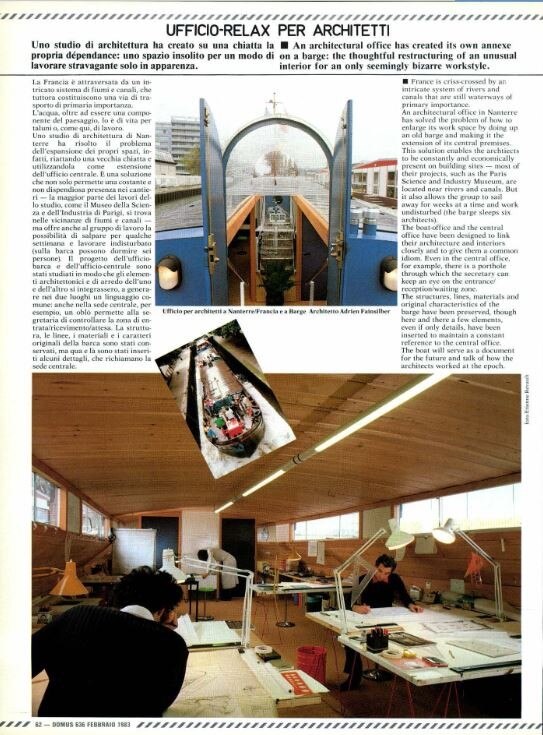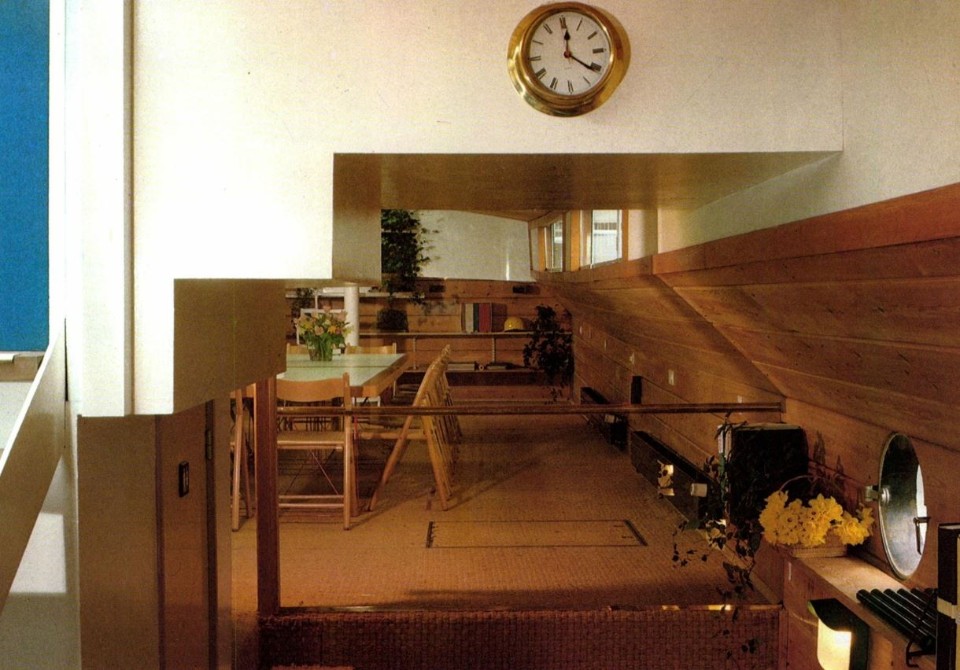The quest for logistical optimization in workplaces since the Fordist age has generated stories, spaces, and devices that over the decades have ranked on varying degrees of feasibility and visionary approach – Italian car manufacturer Gianni Lancia, for instance, in addition to installing in his headquarters continuous-cycle elevators, had also envisioned a solution, soon dismissed, to have his office moving across the different departments, thus reducing time waste.
In 1984 Paris – Nanterre to be precise, inner banlieue – architect Adrien Feinsilber had instead thought that the workplace could take on the appearance of one of those barges moored by the hundreds along the Seine, capable not only of providing a less conventional space for design, but also of moving between different construction sites and offering an often much needed level of retreat difficult to find ordinary offices. Domus published images of this boat-studio in February, in issue 636.

Ufficio-relax per architetti
France is criss-crossed by an intricate system of rivers and canals that are still waterways of primary importance. An architectural office in Nanterre has solved the problem of how to enlarge its work space by doing up an old barge and making it the extension of its central premises. This solution enables the archtiects to be constantly and economically present on building sites – most of their projects, such as the Paris Science and Industry Museum, are located near rivers and canals. But it also allows the group to sail away for weeks at a time and work undisturbed (the barge sleeps six architects).

The boat-office and the central office have been designed to link their architecture and interiors closely and to give them a common idiom. Even in the central office, for example, there is a porthole through which the secretary can keep an eye on the entrance/reception/waiting zone. The structures, lines, materials and original characteristics of the barge have been preserved, though here and there a few elements, even if only details, have been inserted to maintain a constant reference to the central office. The boat will serve as a document for the future and talk of how the architects worked at the epoch.


